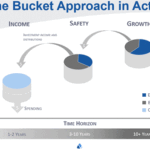Imagine building a safety net with multiple layers, each woven from different materials. This diversification protects you from a single point of failure. Your mutual fund portfolio should function similarly. Each fund within it should represent a distinct asset class, investment style, or market segment. Unfortunately, a common pitfall called “mutual fund overlap” can undermine this diversification, putting your financial goals at risk.This article delves into the world of mutual fund overlap, exploring its impact on your investments and equipping you with strategies to identify and minimize it.
Understanding Mutual Fund Overlap: When Diversification Gets Duplicated
A mutual fund is a professionally managed pool of investor money invested in various assets like stocks or bonds. The beauty of these funds lies in their ability to provide diversification – spreading your investment across multiple companies and sectors. However, when several funds within your portfolio hold the same or similar assets, you’ve fallen prey to mutual fund overlap.Think of it like building your safety net with layers of the same fragile material. While you may have multiple layers, their identical nature weakens the overall protection. This overlap reduces the diversification benefit, potentially amplifying your portfolio’s risk.
The Perils of Overlap: Why It Matters
Mutual fund overlap can lead to a cascade of negative consequences:
- Increased Risk: Diversification is the cornerstone of managing investment risk. When funds overlap, your portfolio becomes overly reliant on a few specific companies or sectors. If those companies or sectors experience a downturn, your entire portfolio suffers disproportionately.
- Redundant Fees: Each mutual fund charges an expense ratio, a fee paid to the fund manager. Overlap essentially means you’re paying multiple fees for essentially the same exposure. These fees can eat into your long-term returns.Reduced Liquidity: Selling overlapping funds to adjust your portfolio can be cumbersome. Since the underlying assets might be similar, selling one wouldn’t necessarily offer the diversification benefit you seek.
- Recognizing the Enemy: Identifying Mutual Fund Overlap
- Being proactive can save your portfolio from the perils of overlap. Here’s how to identify it:
- Review Fund Holdings: Most fund houses publish detailed information about their holdings – the specific stocks or bonds they invest in. Analyze these holdings across your chosen funds. Look for repeated appearances of the same companies or a high concentration in a single sector.
- Investment Style Similarity: Funds can have different styles, like focusing on growth or value stocks. Overlap can occur even with different companies, if their styles are similar. Research the investment style of each fund before adding it to your portfolio.
- Fund Category Overlap: While some overlap within categories (like large-cap funds) is expected, excessive repetition can be a red flag. Consider diversifying across different asset classes like large-cap vs. small-cap, or domestic vs. international funds. Online Tools: Several online platforms offer portfolio analysis tools that can identify overlap. These tools can be a valuable resource for a quick and comprehensive assessment.
- Strategies for a More Balanced Portfolio: Minimizing Overlap
- Now that you’ve identified potential overlap, here’s how to minimize its impact:
- Choose Funds with Distinct Investment Styles: Look for funds with contrasting styles, such as value and growth, or large-cap and small-cap. This ensures that even if the funds hold some common companies, they offer different risk-return profiles.
- Consider Index Funds: These passively managed funds track a specific market index like the Nifty 50. By their nature, they offer broad diversification, helping you reduce overlap within your portfolio.
- Don’t Chase Past Performance: Don’t blindly follow a fund’s past returns. Analyze its current holdings and investment philosophy to ensure it aligns with your overall diversification goals.
- Regular Portfolio Review: Make a habit of reviewing your portfolio at least annually. This allows you to identify any emerging overlap problems and take corrective action through portfolio rebalancing.
- A Word from the Expert: Setting the 40% Threshold
- Jiral Mehta, Senior Research Analyst at FundsIndia, emphasizes the importance of limiting overlap. She recommends aiming for a maximum overlap of 40% between any two equity funds in your portfolio. This helps ensure adequate diversification and mitigates volatility associated with concentrated holdings
- Remember, diversification is not a one-time fix. The investment landscape is constantly evolving, so ongoing monitoring and adjustments are crucial.
- Conclusion:
- Building a Resilient Portfolio, One Diversified Step at a Time
- Mutual fund overlap can be a silent threat to your investment goals. By understanding its implications and implementing the strategies outlined above, you can minimize its impact and build a more resilient portfolio. Remember, diversification is your ally – embrace it to navigate the ever-changing market with confidence.
Read more:10 Global Game-Changers: Watch These Today



GIPHY App Key not set. Please check settings